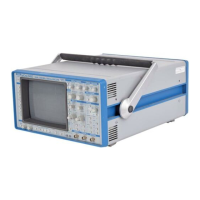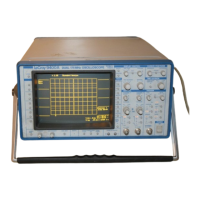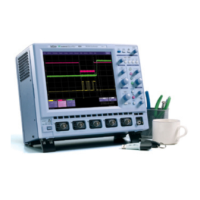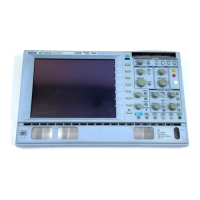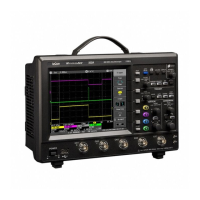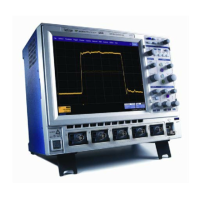10–3
Math Functions and Options
A wide range of standard or optional mathematical and
waveform processing functions are available.
The scope’s standard waveform mathematics functions consist
of waveform negation, identity, addition, subtraction,
multiplication and division, summed averaging of up to 1000
waveforms and the (sin x)/x interpolation function.
Advanced waveform processing features, depending on the
options installed, include:
Ø Continuous Averaging (menus page 10–11);
Ø Summed Averaging of up to 1 000 000 waveforms (menus
10–11);
Ø Enhanced Resolution by up to 3 bits with filtering (menus
10–12);
Ø Extrema — envelope of many waveforms (menus 10–13);
Ø Fast Fourier Transform, including FFT averaging (menus
10–14 and 10–15);
Ø Mathematical Functions such as Integral, Derivative,
Logarithm, Exponential, Square, and Square Root (menus
10–16);
Ø Parameter Analysis, histogramming, trending and statistical
analysis (menus page 10–17).
Continuous Averaging This is the repeated addition, with unequal weight, of successive
source waveforms. It is particularly useful for reducing noise on
signals that drift very slowly in time or amplitude.
However, the statistics of a continuous average tend to be worse
than those from a summed average (see next page) on the
same number of sweeps. This is because the most recently
acquired waveform has more weight than all previously acquired
ones: the continuous average is dominated by the statistical
fluctuations of the most recently acquired.
Coverage of the Setup
menus for configuring
zoom, math and
waveform processing
functions starts page
10–6. Averaging and
Extrema are outlined on
this and the following
pages.
For details on Enhanced
Resolution filtering, see
Appendix B.
How to Set Up for FFT
(Fast Fourier Transform)
is explained at the
conclusion of this
chapter, while a
complete description of
FFT practice and theory
is presented in Appendix
C.
Information on each of
the Waveform
Processing packages on
option is to found in
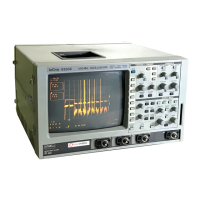
